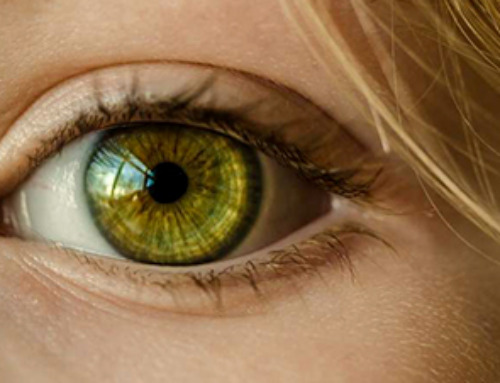Amid the unpredictability and occasional chaos of emergency rooms, a robot has the potential to assist health care workers and support clinical teamwork, Cornell and Michigan State University researchers found.
The research team’s robotic crash cart prototype highlights the potential for robots to assist health care workers in bedside patient care and offers designers a framework to develop and test robots in other unconventional areas.
“When you’re trying to integrate a robot into a new environment, especially a high stakes, time-sensitive environment, you can’t go straight to a fully autonomous system,” said Angelique Taylor, assistant professor in information science at Cornell Tech and the Cornell Ann S. Bowers College of Computing and Information Science. “We first need to understand how a robot can help. What are the mechanisms in which the robot embodiment can be useful?”
Taylor is the lead author of “Towards Collaborative Crash Cart Robots that Support Clinical Teamwork,” which received a best paper honorable mention in the design category at the Association of Computing Machinery (ACM)/Institute of Electrical and Electronics Engineers (IEEE) International Conference on Human-Robot Interaction in March.
The paper builds on Taylor’s ongoing research exploring robotics and team dynamics in unpredictable health care settings, like emergency and operating rooms.
Within the medical field, robotics are used in surgery and other health care operations with clear, standardized procedures. The Cornell-Michigan State team, however, set out to learn how a robot can support health care workers in fluid and sometimes chaotic bedside situations, like resuscitating a patient who has gone into cardiac arrest.
The challenges of deploying robots in such unpredictable environments are immense, said Taylor, who has been researching the use of robotics in bedside care since her days as a doctoral student. For starters, patient rooms are often too small to accommodate a stand-alone robot, and current robotics are not yet robust enough to perceive, let alone assist within, the flurry of activity amid emergency situations. Furthermore, beyond the robot’s technical abilities, there remain critical questions concerning its impact on team dynamics, Taylor said.
But the potential for robotics in medicine is huge, particularly in relieving workloads for health care workers, and the team’s research is a solid step in understanding how robotics can help, Taylor said.
The team developed a robotic version of a crash cart, which is a rolling storage cabinet stocked with medical supplies that health care workers use when making their rounds. The robot is equipped with a camera, automated drawers, and—continuing Cornell Bowers CIS researchers’ practice of “garbatrage“—a repurposed hoverboard for maneuvering around.
Through a collaborative design process, researchers worked with 10 health care workers and learned that a robot could benefit teams during bedside care by providing guidance on medical procedures, offering feedback, and tracking tasks, and by managing medications, equipment, and medical supplies.
Participants favored a robot with “shared control,” wherein health care workers maintain their autonomy regarding decision-making, while the robot serves as a kind of safeguard and monitors for any possible mistakes in procedures, researchers found.
“Sometimes, fully autonomous robots aren’t necessary,” said Taylor, who directs the Artificial Intelligence and Robotics Lab (AIRLab) at Cornell Tech. “They can cause more harm than good.”
As with similar human-robot studies she has conducted, Taylor said participants expressed concern over job displacement. But she doesn’t foresee it happening.
“Health care workers are highly skilled,” she said. “These environments can be chaotic, and there are too many technical challenges to consider.”
Paper co-authors are Tauhid Tanjim, a doctoral student in the field of information science at Cornell, and Huajie Cao and Hee Rin Lee, both of Michigan State University.
More information: Angelique Taylor et al, Towards Collaborative Crash Cart Robots that Support Clinical Teamwork, Proceedings of the 2024 ACM/IEEE International Conference on Human-Robot Interaction (2024). DOI: 10.1145/3610977.3634967
News
Nanoflowers rejuvenate old and damaged human cells by replacing their mitochondria
Biomedical researchers at Texas A&M University may have discovered a way to stop or even reverse the decline of cellular energy production—a finding that could have revolutionary effects across medicine. Dr. Akhilesh K. Gaharwar [...]
The Stunning New Push to Protect the Invisible 99% of Life
Scientists worldwide have joined forces to build the first-ever roadmap for conserving Earth’s vast invisible majority—microbes. Their new IUCN Specialist Group reframes conservation by elevating microbial life to the same urgency as plants and [...]
Scientists Find a Way to Help the Brain Clear Alzheimer’s Plaques Naturally
Scientists have discovered that the brain may have a built-in way to fight Alzheimer’s. By activating a protein called Sox9, researchers were able to switch on star-shaped brain cells known as astrocytes and turn them into [...]
Vision can be rebooted in adults with amblyopia, study suggests
Temporarily anesthetizing the retina briefly reverts the activity of the visual system to that observed in early development and enables growth of responses to the amblyopic eye, new research shows. In the common vision [...]
Ultrasound-activated Nanoparticles Kill Liver Cancer and Activate Immune System
A new ultrasound-guided nanotherapy wipes out liver tumors while training the immune system to keep them from coming back. The study, published in Nano Today, introduces a biodegradable nanoparticle system that combines sonodynamic therapy and cell [...]
Magnetic nanoparticles that successfully navigate complex blood vessels may be ready for clinical trials
Every year, 12 million people worldwide suffer a stroke; many die or are permanently impaired. Currently, drugs are administered to dissolve the thrombus that blocks the blood vessel. These drugs spread throughout the entire [...]
Reviving Exhausted T Cells Sparks Powerful Cancer Tumor Elimination
Scientists have discovered how tumors secretly drain the energy from T cells—the immune system’s main cancer fighters—and how blocking that process can bring them back to life. The team found that cancer cells use [...]
Very low LDL-cholesterol correlates to fewer heart problems after stroke
Brigham and Women's Hospital's TIMI Study Group reports that in patients with prior ischemic stroke, very low achieved LDL-cholesterol correlated with fewer major adverse cardiovascular events and fewer recurrent strokes, without an apparent increase [...]
“Great Unified Microscope” Reveals Hidden Micro and Nano Worlds Inside Living Cells
University of Tokyo researchers have created a powerful new microscope that captures both forward- and back-scattered light at once, letting scientists see everything from large cell structures to tiny nanoscale particles in a single shot. Researchers [...]
Breakthrough Alzheimer’s Drug Has a Hidden Problem
Researchers in Japan found that although the Alzheimer’s drug lecanemab successfully removes amyloid plaques from the brain, it does not restore the brain’s waste-clearing system within the first few months of treatment. The study suggests that [...]
Concerning New Research Reveals Colon Cancer Is Skyrocketing in Adults Under 50
Colorectal cancer is striking younger adults at alarming rates, driven by lifestyle and genetic factors. Colorectal cancer (CRC) develops when abnormal cells grow uncontrollably in the colon or rectum, forming tumors that can eventually [...]
Scientists Discover a Natural, Non-Addictive Way To Block Pain That Could Replace Opioids
Scientists have discovered that the body can naturally dull pain through its own localized “benzodiazepine-like” peptides. A groundbreaking study led by a University of Leeds scientist has unveiled new insights into how the body manages pain, [...]
GLP-1 Drugs Like Ozempic Work, but New Research Reveals a Major Catch
Three new Cochrane reviews find evidence that GLP-1 drugs lead to clinically meaningful weight loss, though industry-funded studies raise concerns. Three new reviews from Cochrane have found that GLP-1 medications can lead to significant [...]
How a Palm-Sized Laser Could Change Medicine and Manufacturing
Researchers have developed an innovative and versatile system designed for a new generation of short-pulse lasers. Lasers that produce extremely short bursts of light are known for their remarkable precision, making them indispensable tools [...]
New nanoparticles stimulate the immune system to attack ovarian tumors
Cancer immunotherapy, which uses drugs that stimulate the body’s immune cells to attack tumors, is a promising approach to treating many types of cancer. However, it doesn’t work well for some tumors, including ovarian [...]
New Drug Kills Cancer 20,000x More Effectively With No Detectable Side Effects
By restructuring a common chemotherapy drug, scientists increased its potency by 20,000 times. In a significant step forward for cancer therapy, researchers at Northwestern University have redesigned the molecular structure of a well-known chemotherapy drug, greatly [...]





















